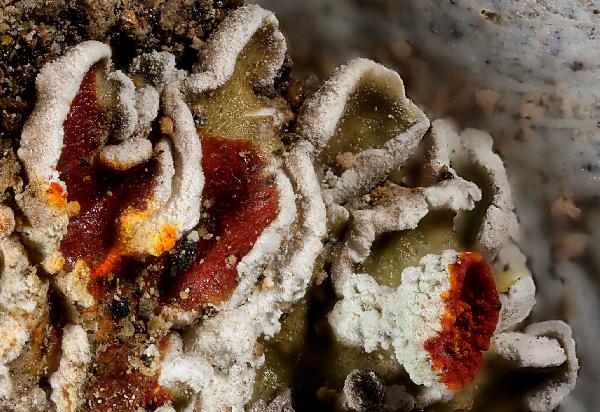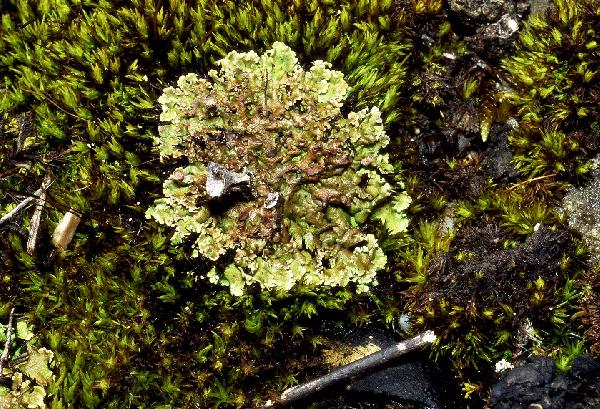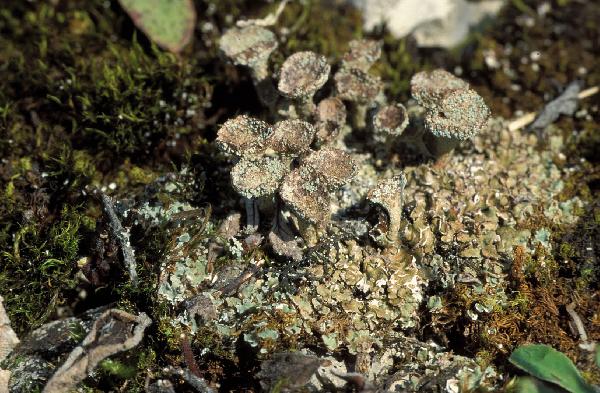Cladonia pyxidata (L.) Hoffm. f. pocillum (Ach.) Nyl.
Bull. Soc. Bot. Fr. 10, 5: 259, 1863. Basionym: Baeomyces pocillum Ach. - Meth. Lich.: 336, 1803.
Synonyms: Cladonia pocillum (Ach.) Grognot; Cladonia pyxidata subsp. pocillum (Ach.) Vain.; Cladonia pyxidata var. pocillum (Ach.) Schaer.
Distribution: N - VG, Frl (Tretiach & Molaro 2007), Ven (Nimis 1994, Nascimbene & Caniglia 1997, 2003c, Caniglia & al. 1999, Nascimbene 2005c, 2008, 2008c, Thor & Nascimbene 2007, Nascimbene & Marini 2007, Brackel 2013), TAA (De Benetti & Caniglia 1993, Nascimbene & al. 2006, 2022, Nascimbene 2008b, Lang 2009), Lomb (Rivellini & Valcuvia 1996, Gheza 2019), Piem (Isocrono & al. 2004), VA (Piervittori & Isocrono 1999, Valcuvia 2000, Piervittori & al. 2004, Galvagno 2006, Galvagno & al. 2006), Emil (Scarpa 1993, Nimis & al. 1996, Fariselli & al. 2020), Lig (Valcuvia & al. 2000, Gheza & al. 2020, Giordani & al. 2025). C - Tosc (Brackel 2015, 2025), Marc (Nimis & Tretiach 1999, Brackel 2025), Umb (Nimis & Tretiach 1999, Ravera & al. 2006, Panfili 2007, Poponessi & al. 2014, Brackel 2015, 2025), Laz (Nimis & Tretiach 2004, Brackel 2015), Abr (Nimis & Tretiach 1999, Brackel 2015, Di Nuzzo & al. 2021, Gheza & al. 2021, Vallese & al. 2022), Mol (Nimis & Tretiach, 1999, 2004, Caporale & al. 2008, Brackel 2020), Sar (Zedda 2002, Brackel & Berger 2019). S - Camp (Aprile & al. 2003b, Nimis & Tretiach 2004, Garofalo & al. 2010, Catalano & al. 2016), Pugl (Nimis & Tretiach 1999), Bas (Nimis & Tretiach 1999, Gianfreda & Matino 2020), Cal (Puntillo 1996, Brackel & Puntillo 2016), Si (Nimis & al. 1994, 1996b, Ottonello & al. 1994, 2011, Ottonello & Salone 1994, Ottonello 1996, Ottonello & Romano 1997, Grillo 1998, Czeczuga & al. 1999, Grillo & al. 2002, 2007, Grillo & Caniglia 2004, Liistro & Cataldo 2011).
Description: Primary thallus squamulose, persistent and prominent, the squamules adnate, middle-sized, 1-5 mm long, 0.3-1(-2) mm thick, flat, forming a subrosulate crust around the base of podetia, brownish to greenish brown above, white below. Podetia funnel-shaped, hollow inside, grey-green to finally brownish, mostly esquamulose, 0.5-3 cm tall, with broad cups gradually tapering into short stalks, regular or rarely proliferating from margin, the cortex disrupted into contiguous to scattered areoles (schizidia), especially inside the cups. Apothecia rare, brown, convex, on the margins of cups. Asci 8-spored, clavate, thickened at apex, with a K/I+ blue tholus and a K/I+ strongly blue outer gelatinous sheath, Cladonia-type. Ascospores 1-celled, hyaline, ellipsoid. Pycnidia brown, on the margins of cups, with a colourless jelly. Conidia cylindrical. Photobiont chlorococcoid. Spot tests: K- or K+ yellowish slowly turning brown, C-, KC-, P+ red, UV-. Chemistry: fumarprotocetraric acid complex.Note: a widespread holarctic morph, found on soil and amongst bryophytes in dry, open grasslands; one of the most common Cladonias of Italy on calcareous substrata. Molecular data do not support its distinction from C. pyxidata at species level (see Kotelko & Piercey-Normore , 2010; Burgaz & al. 2020).
Growth form: Fruticose
Substrata: soil, terricolous mosses, and plant debris
Photobiont: green algae other than Trentepohlia
Reproductive strategy: mainly sexual
Commonnes-rarity: (info)
Alpine belt: rather common
Subalpine belt: very common
Oromediterranean belt: very common
Montane belt: extremely common
Submediterranean belt: extremely common
Padanian area: extremely rare
Humid submediterranean belt: extremely common
Humid mediterranean belt: very common
Dry mediterranean belt: very common

Predictive model
Herbarium samples


Felix Schumm – CC BY-SA 4.0
[16545], Germany, Baden-Württemberg, Kreis Heidenheim, östlich von Söhnstetten an der Abzweigung zum Dudelhof. 48,66772° N, 10,00954° E, 570 m. Auf erdigen Kalkblöcken in Kalktrockenrasen. Leg. et det. Schumm 25.07.2010


P.L. Nimis; Owner: Department of Life Sciences, University of Trieste
Herbarium: TSB (10290)
2001/12/04
primary thallus


Felix Schumm – CC BY-SA 4.0
[16545], Germany, Baden-Württemberg, Kreis Heidenheim, östlich von Söhnstetten an der Abzweigung zum Dudelhof. 48,66772° N, 10,00954° E, 570 m. Auf erdigen Kalkblöcken in Kalktrockenrasen. Leg. et det. Schumm 25.07.2010.


Felix Schumm – CC BY-SA 4.0
[16545], Germany, Baden-Württemberg, Kreis Heidenheim, östlich von Söhnstetten an der Abzweigung zum Dudelhof. 48,66772° N, 10,00954° E, 570 m. Auf erdigen Kalkblöcken in Kalktrockenrasen. Leg. et det. Schumm 25.07.2010.


Felix Schumm – CC BY-SA 4.0
[16545], Germany, Baden-Württemberg, Kreis Heidenheim, östlich von Söhnstetten an der Abzweigung zum Dudelhof. 48,66772° N, 10,00954° E, 570 m. Auf erdigen Kalkblöcken in Kalktrockenrasen. Leg. et det. Schumm 25.07.2010.


Felix Schumm – CC BY-SA 4.0
[16545], Germany, Baden-Württemberg, Kreis Heidenheim, östlich von Söhnstetten an der Abzweigung zum Dudelhof. 48,66772° N, 10,00954° E, 570 m. Auf erdigen Kalkblöcken in Kalktrockenrasen. Leg. et det. Schumm 25.07.2010.


Felix Schumm – CC BY-SA 4.0
[16545], Germany, Baden-Württemberg, Kreis Heidenheim, östlich von Söhnstetten an der Abzweigung zum Dudelhof. 48,66772° N, 10,00954° E, 570 m. Auf erdigen Kalkblöcken in Kalktrockenrasen. Leg. et det. Schumm 25.07.2010.


Felix Schumm – CC BY-SA 4.0
[16545], Germany, Baden-Württemberg, Kreis Heidenheim, östlich von Söhnstetten an der Abzweigung zum Dudelhof. 48,66772° N, 10,00954° E, 570 m. Auf erdigen Kalkblöcken in Kalktrockenrasen. Leg. et det. Schumm 25.07.2010.


P.L. Nimis; Owner: Department of Life Sciences, University of Trieste
Herbarium: TSB (10290)
2001/12/04

Courtesy: Olivier et Danièle Gonnet - Source: https://www.afl-lichenologie.fr/Photos_AFL/Photos_AFL_C/Cladonia_pocillum.htm
France, Mont Cenis - Vanoise - Haute-Savoie
30/11/2014

Courtesy: Olivier et Danièle Gonnet - Source: https://www.afl-lichenologie.fr/Photos_AFL/Photos_AFL_C/Cladonia_pocillum.htm
France, Mont Cenis - Vanoise - Haute-Savoie
30/11/2014

Bernard Bouffinier- Source: http://www.lichensmaritimes.org/index.php?task=fiche&lichen=304&lang=en
France, Provence, Mérindol

Bernard Bouffinier- Source: http://www.lichensmaritimes.org/index.php?task=fiche&lichen=304&lang=en
France, Loiret

Bernard Bouffinier- Source: http://www.lichensmaritimes.org/index.php?task=fiche&lichen=304&lang=en
France, La Palue
avec un début de parasitisme par Diploschistes muscorum

Bernard Bouffinier- Source: http://www.lichensmaritimes.org/index.php?task=fiche&lichen=304&lang=en
France, La Palue

Bernard Bouffinier- Source: http://www.lichensmaritimes.org/index.php?task=fiche&lichen=304&lang=en
France, La Palue

Bernard Bouffinier- Source: http://www.lichensmaritimes.org/index.php?task=fiche&lichen=304&lang=en
France, La Palue

Bernard Bouffinier- Source: http://www.lichensmaritimes.org/index.php?task=fiche&lichen=304&lang=en
France, La Palue

Bernard Bouffinier- Source: http://www.lichensmaritimes.org/index.php?task=fiche&lichen=304&lang=en
France, Pyrenees, Cauterets

Bernard Bouffinier- Source: http://www.lichensmaritimes.org/index.php?task=fiche&lichen=304&lang=en
France, Pyrenees, Cauterets
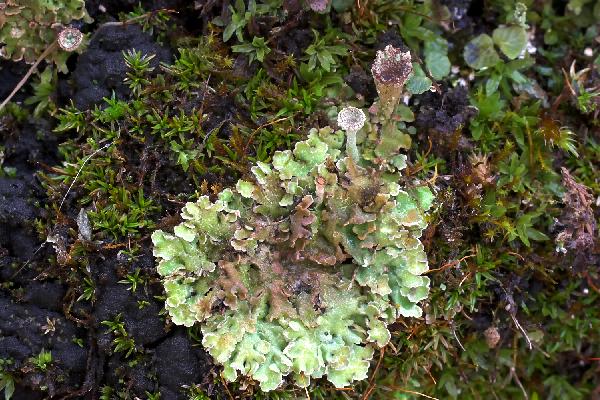
Ulrich Kirschbaum CC BY-SA 4.0 - Source: https://www.thm.de/lse/ulrich-kirschbaum/flechtenbilder
Central Europe; Germany: Hesse.
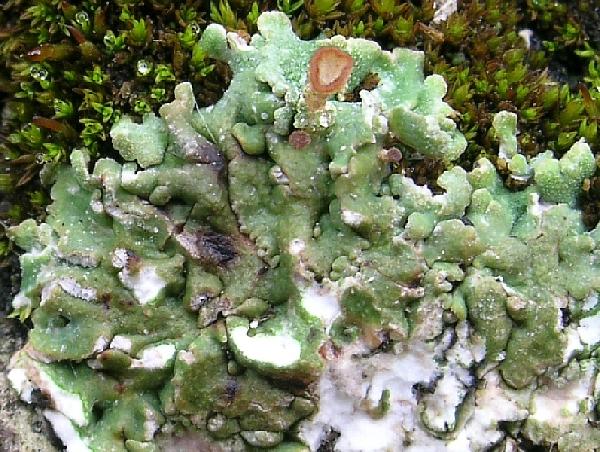
Ulrich Kirschbaum CC BY-SA 4.0 - Source: https://www.thm.de/lse/ulrich-kirschbaum/flechtenbilder
Central Europe; Germany: Hesse.
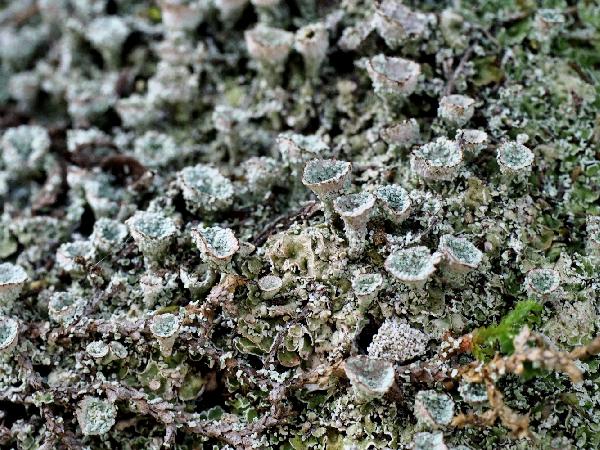
Ulrich Kirschbaum CC BY-SA 4.0 - Source: https://www.thm.de/lse/ulrich-kirschbaum/flechtenbilder
SE-Europe; N-Cyprus; SE of Girne; Beşparmak Mountains; SE of Beylerbeyi (Bellapais)
Growth form: Fruticose
Substrata: soil, terricolous mosses, and plant debris
Photobiont: green algae other than Trentepohlia
Reproductive strategy: mainly sexual
Commonnes-rarity: (info)
Alpine belt: rather common
Subalpine belt: very common
Oromediterranean belt: very common
Montane belt: extremely common
Submediterranean belt: extremely common
Padanian area: extremely rare
Humid submediterranean belt: extremely common
Humid mediterranean belt: very common
Dry mediterranean belt: very common

Predictive model
| Herbarium samples |


Felix Schumm – CC BY-SA 4.0
[16545], Germany, Baden-Württemberg, Kreis Heidenheim, östlich von Söhnstetten an der Abzweigung zum Dudelhof. 48,66772° N, 10,00954° E, 570 m. Auf erdigen Kalkblöcken in Kalktrockenrasen. Leg. et det. Schumm 25.07.2010


P.L. Nimis; Owner: Department of Life Sciences, University of Trieste
Herbarium: TSB (10290)
2001/12/04
primary thallus


Felix Schumm – CC BY-SA 4.0
[16545], Germany, Baden-Württemberg, Kreis Heidenheim, östlich von Söhnstetten an der Abzweigung zum Dudelhof. 48,66772° N, 10,00954° E, 570 m. Auf erdigen Kalkblöcken in Kalktrockenrasen. Leg. et det. Schumm 25.07.2010.


Felix Schumm – CC BY-SA 4.0
[16545], Germany, Baden-Württemberg, Kreis Heidenheim, östlich von Söhnstetten an der Abzweigung zum Dudelhof. 48,66772° N, 10,00954° E, 570 m. Auf erdigen Kalkblöcken in Kalktrockenrasen. Leg. et det. Schumm 25.07.2010.


Felix Schumm – CC BY-SA 4.0
[16545], Germany, Baden-Württemberg, Kreis Heidenheim, östlich von Söhnstetten an der Abzweigung zum Dudelhof. 48,66772° N, 10,00954° E, 570 m. Auf erdigen Kalkblöcken in Kalktrockenrasen. Leg. et det. Schumm 25.07.2010.


Felix Schumm – CC BY-SA 4.0
[16545], Germany, Baden-Württemberg, Kreis Heidenheim, östlich von Söhnstetten an der Abzweigung zum Dudelhof. 48,66772° N, 10,00954° E, 570 m. Auf erdigen Kalkblöcken in Kalktrockenrasen. Leg. et det. Schumm 25.07.2010.


Felix Schumm – CC BY-SA 4.0
[16545], Germany, Baden-Württemberg, Kreis Heidenheim, östlich von Söhnstetten an der Abzweigung zum Dudelhof. 48,66772° N, 10,00954° E, 570 m. Auf erdigen Kalkblöcken in Kalktrockenrasen. Leg. et det. Schumm 25.07.2010.


Felix Schumm – CC BY-SA 4.0
[16545], Germany, Baden-Württemberg, Kreis Heidenheim, östlich von Söhnstetten an der Abzweigung zum Dudelhof. 48,66772° N, 10,00954° E, 570 m. Auf erdigen Kalkblöcken in Kalktrockenrasen. Leg. et det. Schumm 25.07.2010.


P.L. Nimis; Owner: Department of Life Sciences, University of Trieste
Herbarium: TSB (10290)
2001/12/04

Courtesy: Olivier et Danièle Gonnet - Source: https://www.afl-lichenologie.fr/Photos_AFL/Photos_AFL_C/Cladonia_pocillum.htm
France, Mont Cenis - Vanoise - Haute-Savoie
30/11/2014

Courtesy: Olivier et Danièle Gonnet - Source: https://www.afl-lichenologie.fr/Photos_AFL/Photos_AFL_C/Cladonia_pocillum.htm
France, Mont Cenis - Vanoise - Haute-Savoie
30/11/2014

Bernard Bouffinier- Source: http://www.lichensmaritimes.org/index.php?task=fiche&lichen=304&lang=en
France, Provence, Mérindol

Bernard Bouffinier- Source: http://www.lichensmaritimes.org/index.php?task=fiche&lichen=304&lang=en
France, Loiret

Bernard Bouffinier- Source: http://www.lichensmaritimes.org/index.php?task=fiche&lichen=304&lang=en
France, La Palue
avec un début de parasitisme par Diploschistes muscorum

Bernard Bouffinier- Source: http://www.lichensmaritimes.org/index.php?task=fiche&lichen=304&lang=en
France, La Palue

Bernard Bouffinier- Source: http://www.lichensmaritimes.org/index.php?task=fiche&lichen=304&lang=en
France, La Palue

Bernard Bouffinier- Source: http://www.lichensmaritimes.org/index.php?task=fiche&lichen=304&lang=en
France, La Palue

Bernard Bouffinier- Source: http://www.lichensmaritimes.org/index.php?task=fiche&lichen=304&lang=en
France, La Palue

Bernard Bouffinier- Source: http://www.lichensmaritimes.org/index.php?task=fiche&lichen=304&lang=en
France, Pyrenees, Cauterets

Bernard Bouffinier- Source: http://www.lichensmaritimes.org/index.php?task=fiche&lichen=304&lang=en
France, Pyrenees, Cauterets

Ulrich Kirschbaum CC BY-SA 4.0 - Source: https://www.thm.de/lse/ulrich-kirschbaum/flechtenbilder
Central Europe; Germany: Hesse.

Ulrich Kirschbaum CC BY-SA 4.0 - Source: https://www.thm.de/lse/ulrich-kirschbaum/flechtenbilder
Central Europe; Germany: Hesse.

 INDEX FUNGORUM
INDEX FUNGORUM
 GBIF
GBIF
 DOLICHENS
DOLICHENS



